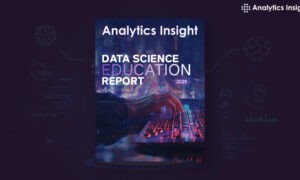Are you ready to unlock the mysteries hidden within the vast realms of data? Welcome to a thrilling journey where raw numbers morph into insightful patterns, and data science becomes an art form that unveils endless possibilities. In this captivating blog post, we will dive deep into the captivating world of data science, uncovering its secrets and unleashing its power. Brace yourself for a mind-bending expedition as we unravel how data can reveal truths, revolutionize industries, and shape our future. Are you ready to embark on this adventure with us? Let’s begin.
What is Data Science?
“Data science” is a field of mathematics, statistics, and computer science that deals with the analysis of data. The field has grown in prominence in recent years as more companies have turned to artificial intelligence (AI) and machine learning to help them understand their customers, predict trends, and make better decisions.
Data scientists use different techniques to gather, organize, and analyze data. They may use a variety of tools, such as Google Analytics or Salesforce Charts, to explore how people are using a website or service. They may also collect data from surveys or interviews to study customer behavior.
Once the data is gathered, the data scientist usually begins by analyzing it using standard mathematical techniques, such as linear regression or correlation analysis. This helps them uncover patterns and insights that they could never have found if they had only analyzed the raw numbers.
Data scientists often collaborate with other members of a company’s IT department and marketing team to build models that can be used to make predictions or improve business performances. As the field continues to grow in popularity, many new jobs will likely be created in areas related to data processing, big data storage and machine learning. aspiring data scientists should consider a degree in mathematics, statistics or computer science.”
The History of Data Science
The origins of data science can be traced back to the early days of computing when researchers were just starting to explore ways to use computers to solve problems. In the 1970s, statisticians and mathematicians began working together with computer scientists to create models that could improve predictions made by statistical models. Soon, these “data scientists” were using their mathematical skills to analyze data sets in order to make better decisions. Today, data science is a well-established field with a lot of diversity and innovation. Here are five essential things you need to know about data science:
1. Data science is all about understanding how data works and extracting valuable insights from it.
2. Data scientists use various techniques such as mathematics, statistics, machine learning, and probabilistic modeling in order to analyze data sets and learn what patterns exist therein.
3. Their goal is usually not only to make accurate predictions but also to generate new ideas or insights that can be used for decision making or improving business operations.
4. Because data science is constantly evolving, professionals must keep up with the latest technologies in order to produce the best results.
5. Although it can be a complex field, there are plenty of resources available online (like this blog) that can help aspiring data scientists get started on their journey into this fascinating realm.
Types of Data Science
Data science is a field of mathematics, data analysis, and computer programming that seeks to extract knowledge from data. The goal of data science is to make informed decisions by using data to improve the business operations or decision making processes. Data scientists utilize various techniques such as statistics, machine learning, natural language processing, and big data analytics to reveal insights in data for use in problem-solving.
There are three common types of data science: descriptive analysis, predictive analysis, and prescriptive analysis. Descriptive analysis focuses on understanding the characteristics of the data while predictive analysis uses the information gathered from descriptive analysis to make predictions about future events. Prescriptive analysis provides guidance on how to improve an organization’s performance through better use of data.
The Process of Data Science
The process of data science can be broken down into a few key steps. The first step is to collect and organize the data. Next, you need to clean and prepare the data so that it is usable for analysis. You need to analyze the data using various techniques to find insights.
Collecting and organizing the data is the most important step in data science because it allows you to understand how the data works. You need to get all of the information that you can from the data, including raw numbers, percentages, and graphs. After you have collected the data, you need to clean it so that it is ready for analysis. This includes removing any errors or invalid values, and combining different types of data into a single dataset.
Once your data is clean, you can start analyzing it using a variety of techniques. Some common techniques are machine learning algorithms, statistics, and graph theory. By using these techniques, you can find insights about how your data works and how people use it.
What are the Benefits of Data Science?
Data science is the process of extracting meaning from data. By understanding the data, businesses can make better decisions and improve their operations. There are many benefits to data science, including improved decision-making, faster turnaround times, and more reliable results.
One of the most important benefits of data science is improved decision-making. Businesses can use data to better understand their customers and what products or services they value most. This information can help businesses make smart choices when it comes to marketing and product development.
Another important benefit of data science is faster turnaround times. When businesses have access to accurate and up-to-date information, they can quickly make changes to their operations. This allows them to stay ahead of the competition and improve their bottom line in a short amount of time.
Data science helps businesses achieve more reliable results. When businesses have access to consistent and accurate data, they can create more effective marketing campaigns and customer relationships. This means that businesses are able to take risks without worrying about jeopardizing their success
Conclusion
Data science is an important and fascinating area of research, and there is a lot of interesting work being done in this field. It is an ever-growing field, and there are always new ideas and techniques being developed. If you are interested in data science, then it is important to keep up with the latest developments.



































